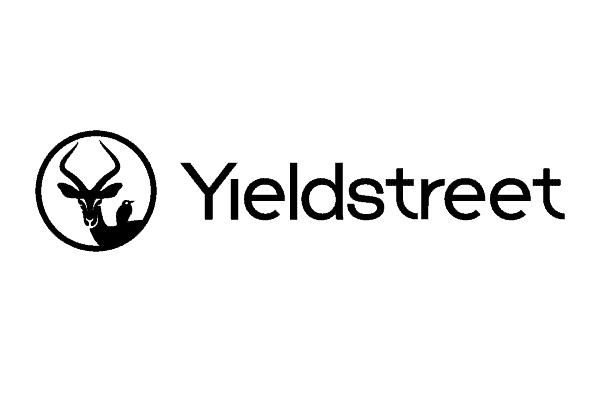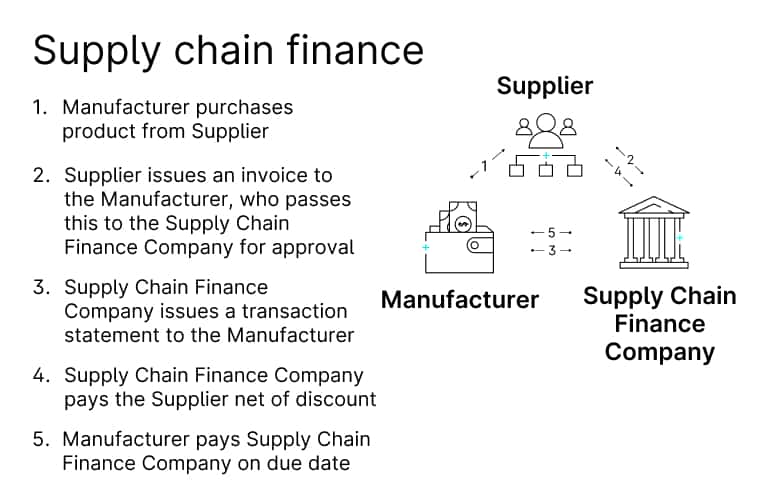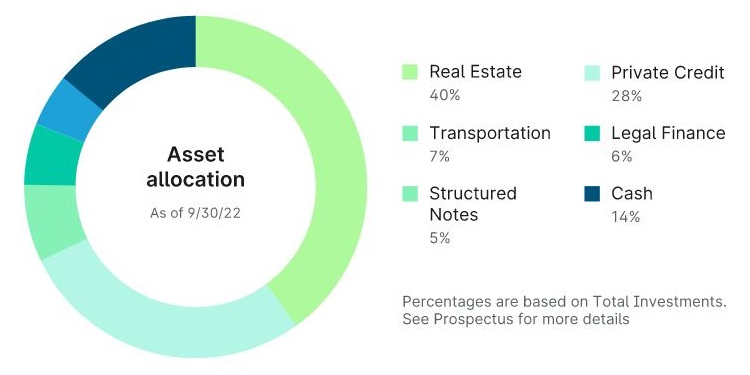Yieldstreet Review 2024: Diversified Alternatives for Passive Income
 This Yieldstreet review was updated on 01/01/2024.
This Yieldstreet review was updated on 01/01/2024.
Yieldstreet empowers ordinary investors to diversify into high-yielding asset classes once reserved for the wealthy and institutional investors.
Marine finance, commercial real estate, legal finance, supply chain finance, and private business credit aren’t new types of investments, but they are relatively new to retail investors.
Yieldstreet’s team has developed an innovative platform that brings these assets to the masses.
Retail investors have a shot at consistent and transparent returns above 10% to build wealth and passive income without stocks or cryptos.
Yieldstreet is well-established, boasting more than 320,000 members and more than $2.7 billion invested on the platform to date. It has raised more than $325 million in venture capital since 2015, including a $100 million Series C in June 2021.
While some fintech platforms fall out of favor over time, Yieldstreet continues to grow, raising private funds, expanding products, and attracting new customers.
As the company grows, it’s expanding the boundaries of investable asset classes available to retail investors.
Table of Contents
Yieldstreet Review 2024 Highlights
- Investment options for accredited (millionaires) and non-accredited investors (everyone else)
- Multiple asset classes for diversified alternative investing under one platform
- Returns with low correlation to the stock market, meaning they tend to be largely unaffected whether the stock market is rising or falling
- $2500 minimum investment for the Prism Fund (the non-accredited investor option)
What is Yieldstreet?
Yieldstreet is a diversified alternative investment platform that offers a wide range of investments.
Alternative investments are generally considered to be any investments made in asset classes other than stocks, bonds, and cash.
Most alternative investing platforms focus on one asset class, such as real estate (Fundrise), farmland (AcreTrader), or fine art (Masterworks).
Yieldstreet’s unique model offers access to several alternative investment asset classes under one platform, enabling substantial diversification not correlated to stock market fluctuations.
It’s an innovative company, new types of investments while maintaining high due diligence standards and market-competitive returns.
Get investment exposure to fine art, real estate, inventories, legal finance, marine vessels, and other non-traditional investments unavailable to retail investors anywhere else.
These alternatives provide a risk/return profile palatable to accredited investors. The platform makes it easy for retail investors while Yieldstreet sources deals and manages the legal and tax aspects behind the scenes.
Yieldstreet believes in a path to realizing the potential of your money. Here’s their manifesto:
It’s time to pull back the curtain on investing and allow all individuals, regardless of net worth, the opportunity to realize their next level.
At Yieldstreet, we’re exposing investment opportunities, so they’re accessible to more people in more ways. Our open-growth ecosystem levels the playing field so more people can access a life that was previously out of reach.
We do this by connecting inventive investors with ambitious originators and streamlining the investment process to help everyone achieve their goals. Our investors gain access to novel investment offerings and investment strategies previously reserved only for institutions and the ultra-wealthy.
With Yieldstreet, more people move forward faster. Investing is no longer bound by opaque practices, long wait times, or prohibitive minimums.
Our mission hinges on the concept of the mutual support of many coming together to achieve more. Through open access, insights, and opportunity, we offer people what they need to realize their next level, no matter where they start.
To be clear, Yieldstreet has nothing to do with cryptocurrencies, NFTs, or Web3 at this stage. I’m sure you’re reading plenty about those areas. You can buy cryptos through Coinbase, BlockFi, or online brokers such as Robinhood or Webull.
How Yieldstreet Works
Yieldstreet partners with experienced originators who provide loans to established credit-worthy businesses and entities. The loans are collateralized by an underlying asset from the associated borrower, such as a real estate property, legal settlement, or shipping vessel.
Yieldstreet then crowdsources money from its investor pool to fund all or part of the loans.
Certain deals, particularly real estate and marine financing, involve equity ownership. Equity ownership involves creating a partnership structure, and investors receive a K-1 for tax purposes.
However, most deals involve providing loans to a borrower receiving regular payments at a fixed interest rate in return.
All investing takes place through the platform. New users will create an account and start building a portfolio of diversified holdings.
Yieldstreet Review 2024: Types of Investments
We all know what Apple (AAPL) does, and that’s one reason so many people own the stock.
But you should never buy stock in a company that you don’t understand.
The same goes for alternative investments.
This Yieldstreet review goes over the types of alternative investment available on the platform and describes the very basics of how each works.
I also provide links where to find more information.
Because of the wide range of investment types, each investor must perform personalized due diligence before investing.
Understand how each investment works — if you don’t understand, don’t invest.
If you invest, only invest with funds you can afford to lose. Though most investments are backed by hard assets, there are no guarantees.
I also recommend diversifying your invested cash across multiple asset types, utilizing funds (such as the Prism Fund) when available.
Check out the resources page for an overview of each asset class available.
Legal Finance
I’m not an attorney. But if you are, or you understand how courts and the law work, legal finance opportunities may be a good fit for you.
Yieldstreet offers different types of law-related investment opportunities under the “legal finance” moniker. Some examples of legal finance are as follows:
- Pre-settlement funding — Essentially, a cash advance against the anticipated settlement of a personal injury lawsuit.
- Law firm financing — Helps plaintiffs’ counsel or trial attorneys who offer contingency fee representation to manage their cash flow.
- Leveraged buyouts of law firms or case portfolios — A law firm sale might occur due to the death of a senior partner, a partnership breakup, insufficient capital, or for other reasons.
- Capital for legal advertising — Strategic capital to help finance major advertising campaigns.
- Post-settlement funding — Financing for plaintiffs who settled their case but are awaiting settlement funds for a variety of reasons.
- Mass tort funding — Temporary financing to support needs associated with class-action lawsuits.
Risks associated with these kinds of legal financing deals vary based on several factors. Perform due diligence and don’t invest unless you understand the deal.
Read more:
- Understanding the different types of Legal Finance
- Legal Finance in the United States: How It Started
- How Legal Finance works
Supply Chain and Commercial Finance
Supply chain finance is an investment type that helps to lower financing costs and improve cash flow for buyers and sellers of international goods.
Companies involved in supply chain finance help optimize working capital and provide liquidity to both parties in a trade. Suppliers gain quicker access to money owed, and buyers get more time to pay off their balances.
This finance tool enables both parties to use cash on hand for other projects.
Here’s how it works:

So why don’t buyers and sellers use traditional banks for their financing needs? The deals on Yieldstreet are typically too large for most specialty finance companies to offer.
But Yieldstreet’s large pool of investors with a risk appetite for high yields allows for larger overall transactions and more competitive rates than traditional banks are willing to offer.
Other types of commercial financing have been available on the Yieldstreet platform over the years. Below are links to a few other types of commercial financing investments.
These are typically debt financing deals to support capital-intensive industries involved in buying, selling, and trading goods.
Read more: Supply Chain Financing Explained, What is Purchase Order Financing?, What is Trade Finance?, What is Invoice Factoring?
Marine Finance
Most of the objects in our homes likely arrived via a shipping container. Seaborne trade is a $12 trillion industry.
Marine borrowers can have irregular lending or interest payment timelines that are incompatible with bank requirements.
Borrowers go to Yieldstreet because it provides flexibility compared to traditional lending institutions.
Yieldstreet partners with loan originators to fund three different types of marine finance activities.
- Vessel acquisition — Yieldstreet raises funds to acquire shipping vessels then leases them to companies that manage vessels that deliver raw goods and materials across the globe. Like real estate, cash flow services the outstanding loan providing income, and the potential for asset appreciation.
- Vessel construction — Cargo ship construction can be a multi-year undertaking that costs tens of millions. Yieldstreet investors help to fund building new ships.
- Vessel deconstruction — When a vessel reaches its end of life, its raw materials are more valuable disassembled. Acquiring and commissioning a ship for deconstruction requires high up-front costs.
Read more: What is Marine Finance? (video), How is Marine Finance Like Real Estate? (video)
Fine Art Finance
Yieldstreet offers investors access to art financing deals. The platform provides lending services to art collectors, art dealers, museums, estates, foundations, and corporate clients.
Art owners borrow against their portfolios to increase liquidity and to acquire more paintings.
Banks have narrow criteria for issuing loans, and fine art often doesn’t fit their risk appetite.
This is where Yieldstreet steps in to provide short and long-term financing to clients, collateralized by the artwork. Yieldstreet applies strict collateral standards to reduce investors’ risk.
If a borrower defaults, Yieldstreet is entitled to take ownership of the art, similar to a real estate foreclosure.
The Yieldstreet art finance product is much different than Masterworks. At Masterworks, investors crowdsource funds to acquire art pieces and own the artwork through a partnership to participate in asset appreciation.
Yieldstreet’s product provides investors with an alternative source of passive income.
Read more: Yieldstreet: Overview on Art Finance
Real Estate
Like other real estate crowdfunding offerings on various platforms, Yieldstreet offers retail investors debt and equity deals. It’s been offering real estate deals since its beginning.
Debt offerings are typically short-term fixed-rate loans made to real estate developers to acquire and or renovate a property. Here’s an example of a previous deal on Yieldstreet, a multi-family project in Baltimore.
Debt investments pay a set interest rate based on the terms of the deal. Investors receive a tax form 1099-INT in the first quarter of the new year.
Equity investments involve Yieldstreet investors collectively buying an ownership stake in a property optimized for income and price appreciation. Here’s an example of a previous deal in Columbus, Ohio.
The lowest risk deals receive reliable cash flow from long-term occupants. Higher risk deals may involve acquiring debt of a property expected to foreclose, taking ownership, and reselling.
Deal terms disclose payment schedule, target term length (e.g., five years), estimated expected returns, and fees.
Equity deals usually pay interest, and investors participate in price appreciation. Investors receive a tax form K-1 in the first quarter of the new year.
Yieldstreet does not currently offer non-traded REITs targeted at non-accredited investors, similar to other real estate crowdfunding platforms.
Read more: Real Estate at Yieldstreet
Short-term notes
Yieldstreet short-term notes offer a 4% return on cash, akin to a savings account.
However, Yieldstreet is not a bank, and the short-term notes are not FDIC-insured.
But the short-term notes serve as a good option for parking your money while waiting for other investments. If you’re accredited and willing to take a bit more risk, 4% is better than today’s standard savings account rates.
Yieldstreet offers “rolling” short-term notes, so investors can participate in multiple notes with different closing dates, similar to investing in a CD ladder. Each offering is valid for 120-180 days.
Investors receive monthly interest payments at an annualized interest rate (currently 4%) and get their principal back at the end of the note’s maturity.
Yieldstreet uses money raised to fund investment opportunities launched on the platform.
Short-term notes carry the risk that an investment opportunity will default before being fully subscribed. In this case, Yieldstreet would work to recover the cash invested in the underlying investment. Some investments may have senior lenders who would receive the first payment in case of default.
So these aren’t risk-free. But so far, the returns have been stable and low risk.
The Yieldstreet Prism Fund
Yieldstreet is primarily for accredited investors. However, the platform has one investment product called the Yieldstreet Prism Fund that yields a flat 8% return.
Most U.S.-based investors can invest in this Fund (residents of NE and ND cannot).
An accredited investor is someone with more than $200,000 of annual income ($300,000 for a married couple) or a portfolio of invested assets worth more than $1 million (excluding home equity).
As of this Yieldstreet review, the Fund has raised more than $88 million. The Prism Fund currently holds more than five asset classes, including fine art, consumer and commercial lending, legal finance, real estate, and corporate lending assets.
Here are some important details:
- Distributions — The fund sends distributions (dividends) to investors every quarter, yielding a flat 8%. A $1,000 investment would pay you $20 each quarter.
- Minimums — $2,500 is the minimum investment amount.
- Reinvestment — Distributions are automatically reinvested unless the investor directs otherwise.
- Fees — A 1.5% fee (management + admin fees) is charged on the invested capital. Distributions are not reduced by fees.
- Duration — The fund will cease investing and seek to liquidate its remaining portfolio starting in March 2024, when the Fund will return capital to investors (or offer similar products with extended durations).
- Liquidity — Investors have the opportunity to liquidate capital once per quarter.
Here is a breakdown of the asset allocation as of September 2022:
Read more about the Yieldstreet Prism Fund and download the prospectus.
What I like about the Prism Fund, beyond accessibility, is that you automatically get access to multiple alternative assets classes with one investment. It makes diversification easy for both accredited and non-accredited investors.
Yieldstreet Fees
As stated above, the Prism Fund fees are pretty straightforward. But for most other investments, the fees vary. Read each investment description carefully.
You can expect to pay higher fees when investing in alternative investments on a platform such as Yieldstreet. Higher fees are due to the complexities and administration behind such offerings. However, the fees are transparent and have not prevented the platform returns from exceeding 10% after fees.
Fees range from 0% (for short-term notes) to 2.5%. The fees are clearly disclosed for each investment opportunity.
The displayed net returns for all Yieldstreet platform offerings are stated after management fees.
There are also annual fund expenses charged to investors paid from investment cash flows that vary slightly depending on the legal structure of the offering. Each fee is disclosed on the individual offering pages.
IRR (internal rate of return) data shared on the statistics page is after fees.
Yieldstreet Liquidity
Liquidity is the ease of getting back your original invested principal.
Most active investments on Yieldstreet are not liquid, except for the Prism Fund, which allows for quarterly liquidity. This is due to the nature of these alternative assets being tied to specific durations.
Once your investment is made, you cannot modify or cancel your investment for the remaining duration of the offering, which is stated upfront.
Some investments may offer liquidity events during the investment term, which is specified in the original offering page.
Modifications or cancellations may be considered on a case-by-case basis. Invest as though your money is unavailable until the end of the duration.
Yieldstreet Tax Implications
Investing in any asset will result in tax consequences, so never let taxes deter you from investing. However, never invest in an asset without knowing the tax implications.
Depending on the investment’s legal structure, each investor will receive a form K-1 or 1099 for tax purposes in the first quarter of each year.
The structure of each investment (and anticipated tax statement) will be clearly stated when evaluating investments.
Generally, debt investments — where the investor loans money to a borrower, will require a form 1099 at tax time.
Equity investments typically require a form K-1.
Reporting 1099 income is the same as interest-bearing savings accounts or dividend income, so they are straightforward at tax time.
Schedule K-1’s may be less familiar to many investors. You must receive and report K-1 income with your taxes. However, sometimes K-1s are not delivered on time.
Consult with a tax professional about any additional questions about related tax implications.
Read more: Reporting Your Investment to the IRS
Yieldstreet Review 2024: Conclusion
If you think the stock market is overvalued, or are just looking to diversify beyond stocks and bonds, then Yieldstreet may be the right platform for you.
It provides access to several alternative investment assets and historic returns above 10%.
That’s not a guarantee that returns will continue to thrive, but these assets are non-correlated to the stock market. So the typical fluctuations that experienced investors are used to will likely not be as volatile.
Yieldstreet has embraced the passive income model for retirement income, so most of their investments are designed to provide income while investors patiently wait.
That’s a formula I can get behind because I’m always on the watch for new income streams to help me rely less on full-time work.
As always, perform due diligence on any investment undertaking. Especially for this platform, understand the details behind each investment before committing capital. If you don’t understand the investment, you cannot assess risk.
Feel free to email me with questions about this Yieldstreet review, and I will do my best to point your inquiry in the right direction. Check out the Yieldstreet FAQs here.
Yieldstreet Review
-
Ease of Use - 9/10
9/10
-
Tranparency - 9.5/10
9.5/10
-
Diversification - 10/10
10/10
-
Fees - 8/10
8/10
-
Investment Selection - 9.5/10
9.5/10
-
Liquidity - 8/10
8/10
Summary
Yieldstreet is a modern platform to invest in a diversified array of alternative assets. Each deal and fund fully explains what you’re investing in, so always read the term sheets. Diversification is the paramount offering here, but it comes with significant management fees. However, fees enable a wide range of investment options and haven’t reduced the competitive returns available on the platform. The platform’s popularity and scarcity of new investments may limit the time you have to place an investment in high-demand deals. Due to the nature of these investments, liquidity is limited in most deals. But you can increase your diversification and liquidity using the Prism Fund, which is available to non-accredited and accredited investors alike.

Craig is a former IT professional who left his 19-year career to be a full-time finance writer. A DIY investor since 1995, he started Retire Before Dad in 2013 as a creative outlet to share his investment portfolios. Craig studied Finance at Michigan State University and lives in Northern Virginia with his wife and three children. Read more.
Favorite tools and investment services right now:
Sure Dividend — A reliable stock newsletter for DIY retirement investors. (review)
Fundrise — Simple real estate and venture capital investing for as little as $10. (review)
NewRetirement — Spreadsheets are insufficient. Get serious about planning for retirement. (review)
M1 Finance — A top online broker for long-term investors and dividend reinvestment. (review)


Thanks for sharing! You referenced “distributions are not reduced by fees”, meaning that the fees don’t impact the $20 / quarter? Does the 1.5% management + admin fee then get taken from the “flat 8%”? i.e. result would be 6.5% post-fees?
I have not invested via Yieldstreet but am considering the Prism fund.
As I understand it, you still will be paid an 8% yield. Fees are “paid by the fund”. I interpret this to mean that fees are paid from principal invested. “Total annual fees of 1.5%, which are only charged on the Fund’s assets that have been invested (no fees are charged for cash in the Fund that is not invested). No load or redemption fees.” The Prospectus gives more detail on fees. https://www.yieldstreetprismfund.com/YieldStreet-Prism-Fund-Prospectus.pdf